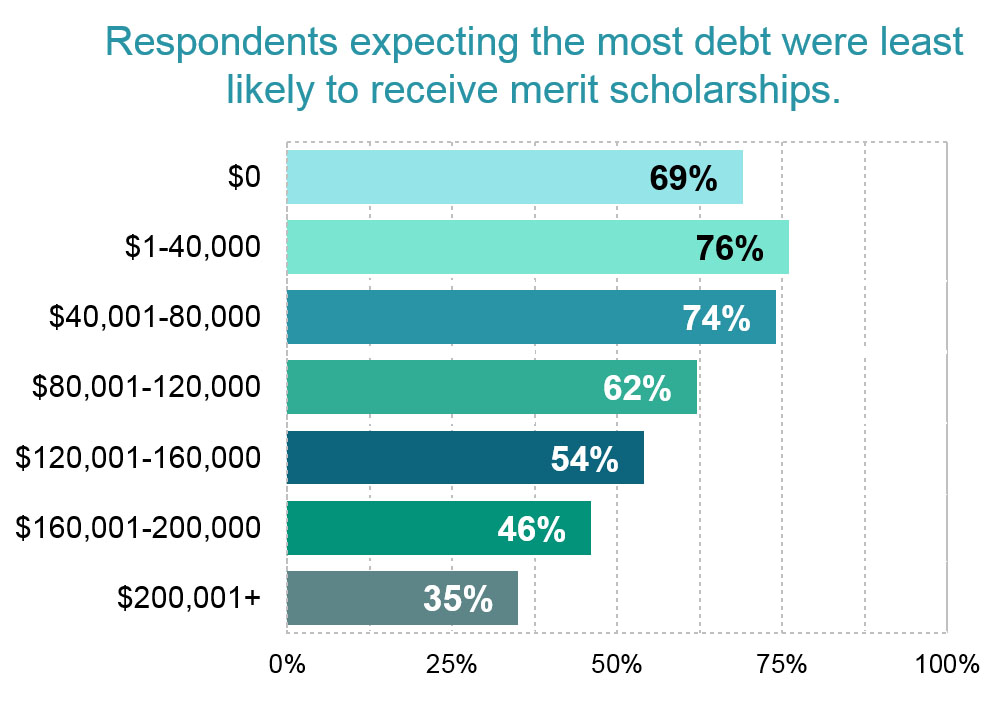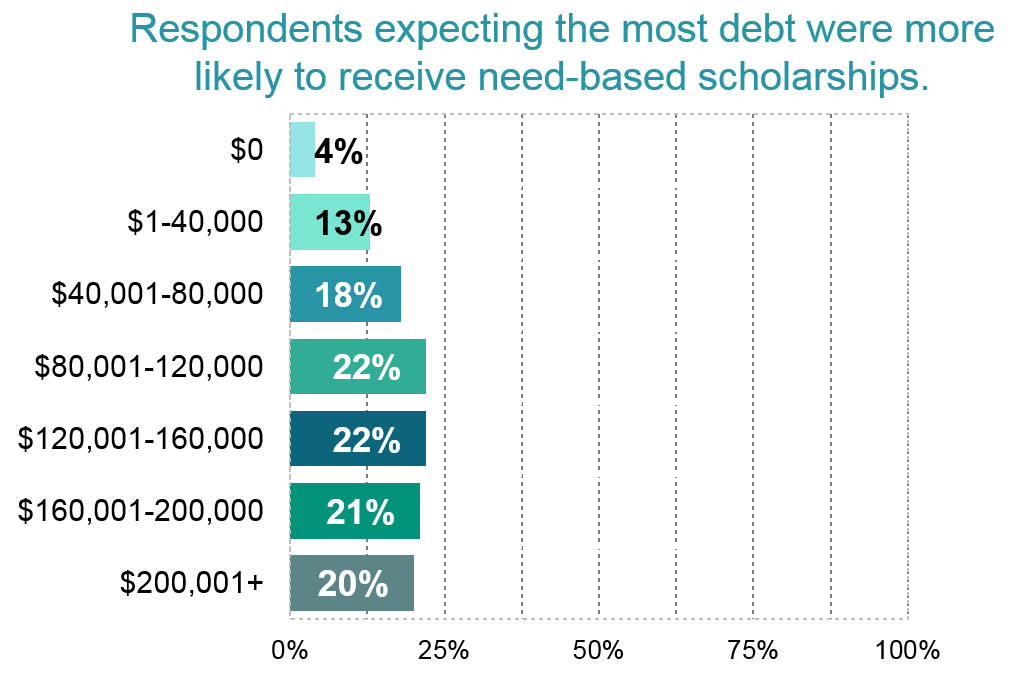This is the fourth installment in a series of five posts based on data from the 2016 LSSSE survey administration and the 2016 Annual Report. The LSSSE 2016 Annual Report highlights inequities in scholarship policies and the associated consequences for student loan debt. In this post, we look at the expected student loan debts among merit- and need-based scholarship recipients.
The distribution of law school scholarships has vast implications for student debt trends. The more a student receives in scholarship aid, the less likely it is that they will have to rely on loans to fund their studies. Among 2016 LSSSE respondents, students expecting higher law school debts were less likely to have received merit scholarships. Respondents expecting more than $200,000 in debt were only about half as likely to have received a merit scholarship as those expecting $80,000 or less. At each interval above $40,000 in expected debt, chances of having received a merit scholarship declined.

Conversely, respondents expecting higher law school debts were more likely to have received need-based scholarships. However, the relative rarity of those awards limits their impact.

In our next and final post in this series, we will show how receipt of a scholarship relates to self-reported stress levels and overall satisfaction with law school.
Мега даркнет площадка, Mega даркнет ссылка, Mega даркнет сайт, Mega площадка Mega даркнет площадка!
